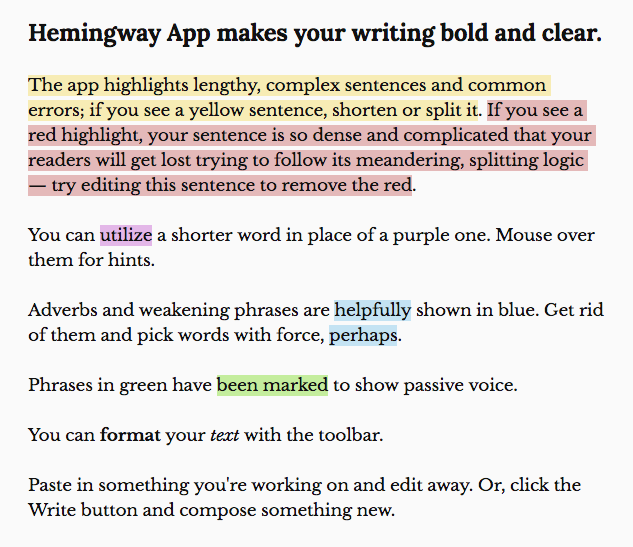One of the fundamentals of a successful SEO strategy is great content marketing. Whether you’re a word wizard or can’t grasp the difference between a verb and an adverb, you’ll need to create high performing content on way or another. According to Content Marketing Institute, over 90% of businesses used some form of content marketing in last year.
Creating high performing content doesn’t mean using a huge budget or having impeccable writing skills – it’s knowing what works for your audience. To generate content that performs well, you need to know six principles of high-performing content to boost your rankings with quality content.
Now, the word “quality” may seem subjective. After all, who determines what makes a piece “quality”? Google has its own quality guidelines, as seen here, but there are other factors that are proven to boost rankings as well. Those factors are what contribute to a piece of content’s performance:
Clarity
One of the most important factors of quality content is the clarity of the information. Reading online is much different than reading in print. Often, we’re skimming through content when it’s being read online. As consumers, we’re most-likely reading content on our mobile devices (In fact, nearly 60% of searches are done on a mobile device). The material must be clear for your audience to quickly understand and process the information. Easy to read content comes in the form of less complex sentences, smaller paragraphs, and bullet points.
Thankfully, the Internet has tons of resources to help you create clearer content. For example, one web-based application, Hemingwayapp.com helps you break down complex sentences for better clarity.
Originality
Think about the last article or infographic you shared—what made you share it? I’m sure part of the reasoning behind your sharing was the original content it included. Not only is original content great for readers—it’s also great for SEO. Google punishes those websites with repeated content. On the flip side, quality content that provides the reader with useful information ranks higher than those that do not.
Creating original, informative content will not only rank you higher, your users will want to read it and they’ll want their friends to read it. The key to high-performing content is the helpfulness and originality of the piece. Remember this when you’re drafting your content.
Length
It’s been disputed that there’s a magic number of words a piece of content should have for it to be shareable. Numbers from 500 to 1,500 have been thrown around across all digital marketers. And while there may be statistics that show certain posts with a specific word count work well, it’s not industry standard.
The main concern is that you’re crafting content that’s short and to the point. There’s nothing worse than reading an article filled with “fluff” material—that is, information that’s not important. Fill your pieces with information, but remember there’s someone on the other end reading it!
Engaging Content
Unless you’re a history buff, reading your history textbook in high school was probably a drag. Consider this when you’re creating content for your website or business. Engaging content is shareable content. Shared content and an engaged audience means search engines will notice, and that means higher rankings. Below are several ways you can create engaging content:
- Leave readers wanting answers. Of course, your content should be complete and informative—but you should also leave your readers with questions. Leave them wondering how they can be actionable with your content. Even better, ask questions at the end of your content. For example, ask your readers specifically what they did with the information you provided.
- Start with a strong introduction. Have you ever been a few words into an article and realized you weren’t interested? Don’t let this happen to your content! Make your audience want to read your content—start with a strong introduction that explains what you’ll be discussing and why they should continue reading.
- Use personal stories to connect with your audience. Creating engaging posts means connecting with your audience. One way to do this is to add personal stories or anecdotes to your content. This shows the audience your business (or you!) are human—it’s easier for them to connect with a human than a faceless blog post or other.
Accurate Content
Whether you’re a marketer for a large firm working with high paying clients or you’re a webmaster starting out your own business, you want to ensure the content you’re putting out is accurate. Think about the damage that would be done to a reputation! A trustworthy blog post or article builds trust with your audience. When you’re creating content, think of which sources you’re using. Are they reliable? Are they viewed as a trusted source in the industry?
Link directly to the source of your information. This not only shows the information is reliable; it also helps your SEO strategy. Linking to quality sources shows your audience can trust you—it also shows search engines that your content is based on fact. The more links you incorporate, the easier it’ll be for search engines to find you and index your content.
Visual Content
Did you know that 65% of the population is a visual learner? Because of this, it’s important to add visuals to your content. Visual content, such as photos and video, help the reader better understand your content. However, before you start adding a ton of visuals, make sure that they’re relevant to the content. Only add images and video that will add value to your post.
In the end, creating excellent content is more of a science than an art. It’s a strategy that takes planning and knowledge of your result. Before you sit behind your computer and type of a longwinded blog post, keep in mind these principles of high-performing content.
Would you add anything to the list? Let us know in the comment section below!


